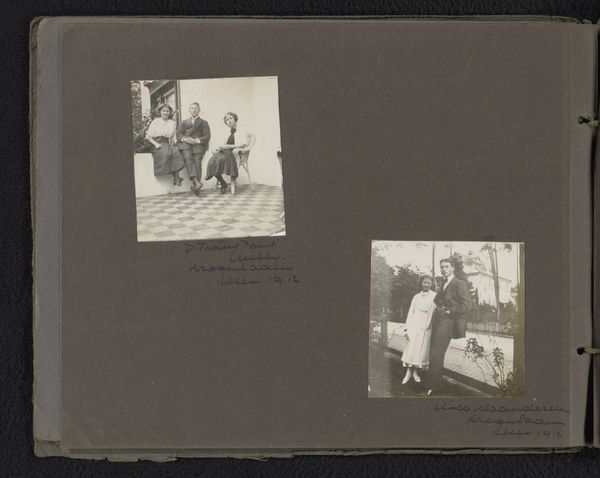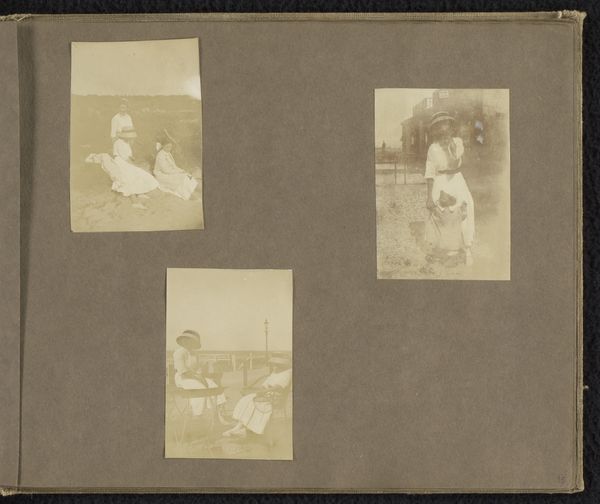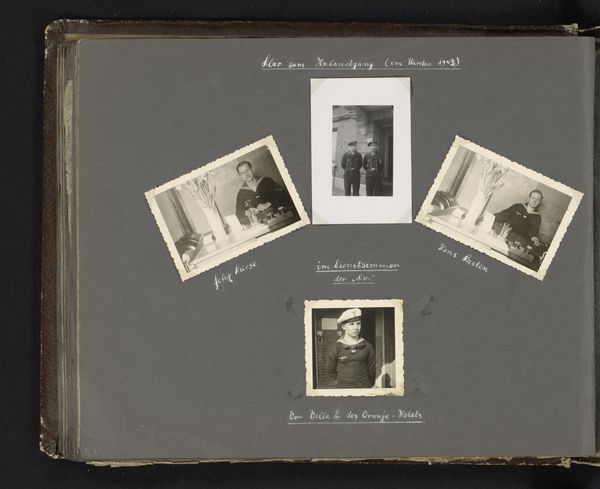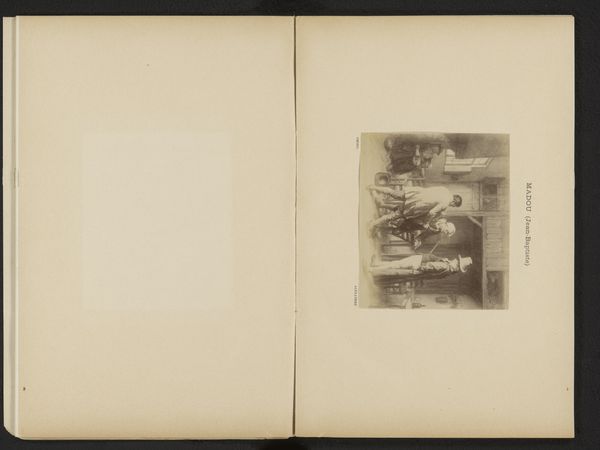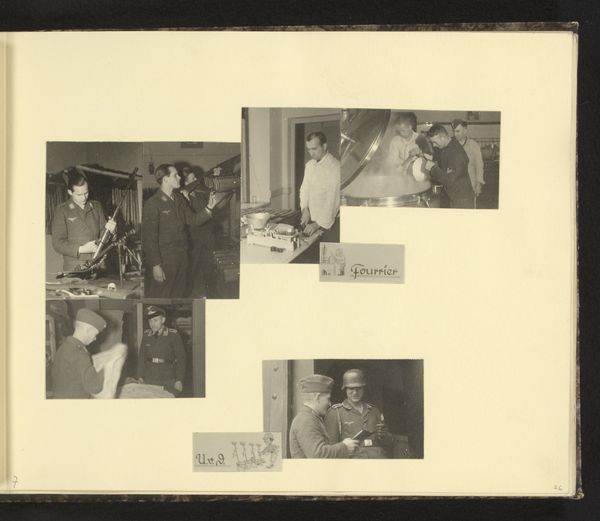
Loentje Onnen met een vriendin op de Oude Turfmarkt in Amsterdam 1912 - 1914
0:00
0:00
photography, albumen-print
#
portrait
#
pictorialism
#
sculpture
#
photography
#
intimism
#
group-portraits
#
watercolor
#
albumen-print
Dimensions: height 240 mm, width 300 mm
Copyright: Rijks Museum: Open Domain
Editor: So, here we have "Loentje Onnen with a Friend on the Oude Turfmarkt in Amsterdam," taken sometime between 1912 and 1914. It's an albumen print photograph, seemingly a casual snapshot of daily life. The faded sepia tone gives it this really nostalgic feel. Looking at it, I'm wondering, what cultural narratives were these types of personal photos trying to construct? Curator: That's an astute observation. These 'snapshots' appearing within photo albums present constructed narratives, particularly for women within the intimacy of the domestic sphere during the early 20th century. Think about the social and political context: women's roles were still largely confined. The pictorialist style, mimicking painting, elevated photography to fine art but simultaneously used familiar and comfortable motifs for women. The image, by framing Onnen with a "friend," invites an audience to recognize female bonding, and safe engagement within an acceptable public life. Who has the privilege of creating and controlling such records and archives? Editor: I see, it's less a candid moment and more a curated presentation of their social identity. It sounds like photography offered a degree of agency, but within constraints. Does the setting contribute to that reading? Curator: Precisely. Note how the ‘Oude Turfmarkt’, while ostensibly public, functions as a backdrop, almost a stage for their performance of friendship. The focus isn't on the bustle of the market itself but on the figures posed within it. We could consider who these photos were meant for – family, friends? What stories were they designed to tell about themselves? Were they pushing boundaries? Editor: I hadn't considered it that way before, but that context is illuminating. So much is communicated not just in the image itself but through its implied audience and setting. Curator: Indeed, photography, even in its most seemingly intimate forms, always exists within a social framework. What else did you notice? Editor: This makes me think about the images we create today, and what stories they will tell about our society a hundred years from now. It's quite sobering. Thank you for this rich insight!
Comments
No comments
Be the first to comment and join the conversation on the ultimate creative platform.






